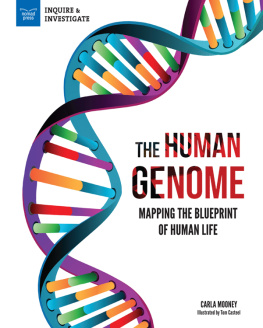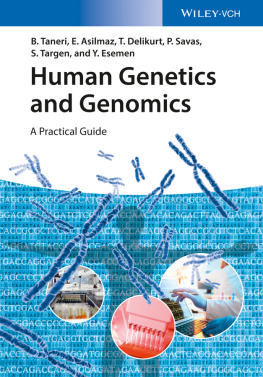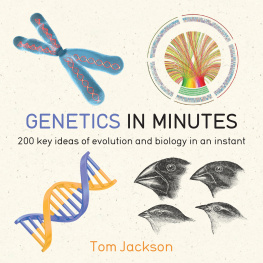Carla Mooney - Genetics: Breaking the Code of Your DNA
Here you can read online Carla Mooney - Genetics: Breaking the Code of Your DNA full text of the book (entire story) in english for free. Download pdf and epub, get meaning, cover and reviews about this ebook. year: 2014, publisher: Nomad Press, genre: Home and family. Description of the work, (preface) as well as reviews are available. Best literature library LitArk.com created for fans of good reading and offers a wide selection of genres:
Romance novel
Science fiction
Adventure
Detective
Science
History
Home and family
Prose
Art
Politics
Computer
Non-fiction
Religion
Business
Children
Humor
Choose a favorite category and find really read worthwhile books. Enjoy immersion in the world of imagination, feel the emotions of the characters or learn something new for yourself, make an fascinating discovery.
- Book:Genetics: Breaking the Code of Your DNA
- Author:
- Publisher:Nomad Press
- Genre:
- Year:2014
- Rating:5 / 5
- Favourites:Add to favourites
- Your mark:
Genetics: Breaking the Code of Your DNA: summary, description and annotation
We offer to read an annotation, description, summary or preface (depends on what the author of the book "Genetics: Breaking the Code of Your DNA" wrote himself). If you haven't found the necessary information about the book — write in the comments, we will try to find it.
Why do children resemble their parents and siblings? Introducing young readers to the fascinating world of genetics, this educational resource presents the main concepts of the science, including what a chromosome does, how DNA is structured, and how genetic inheritance works. Students learn about new discoveries in the field of genetics and how those discoveries have helped to cure or even prevent certain diseases, as well as examine controversial issues in genetics such as genetically modified foods and stem cell research. Combining inquiry-based, age-appropriate activities with biology, Genetics: Breaking the Code of Your DNA features graphic novel illustrations, fascinating sidebars, and a glossary of important vocabulary to illuminate the complex world of genetics and bring it to life. Projects include building 3D DNA double helix models, extracting DNA, using a Punnet Square to predict an offsprings probability of inheritance, and evaluating the benefits and risks of genetically engineering a new species. Additional materials include a list of current reference works, websites, and Internet resources. Genetics meets common core state standards in language arts for reading informational text and literary nonfiction and is aligned with Next Generation Science Standards. Guided Reading Levels and Lexile measurements indicate grade level and text complexity.
Carla Mooney: author's other books
Who wrote Genetics: Breaking the Code of Your DNA? Find out the surname, the name of the author of the book and a list of all author's works by series.





















 Whether you have brown hair or blue eyes is determined by the genes that you received from your mom and dad.
Whether you have brown hair or blue eyes is determined by the genes that you received from your mom and dad.